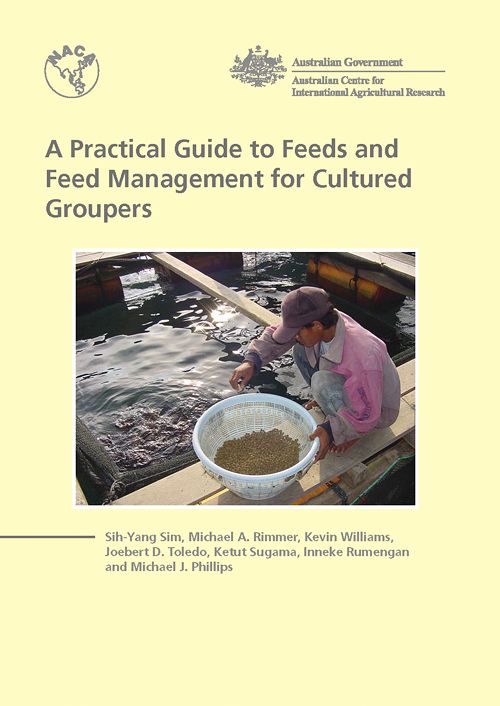A Practical Guide to Feeds and Feed Management for Cultured Grouper
1 June 2005 | Sih-Yang Sim, Michael A. Rimmer, Kevin Williams, Joebert D. Toledo, Ketut Sugama, Inneke Rumengan and Michael J. Phillips | 1397 Downloads | .pdf | 1 MB | Better management practices, Marine finfish, Nutrition and feeding
Farming of groupers (members of the Serranidae, subfamily Epinephelinae) is widely practiced in Asia. Groupers are carnivorous and consequently prefer feeds high in fish protein. Most farms in Asia still rely on what is commonly termed "trash fish". Despite the apparent abundance and availability of "trash" fish in many areas, there are some issues and problems related to its use in fish farming.
To provide farmers with a viable alternative to feeding trash fish to grouper, the Australian Centre for International Agricultural Research (ACIAR) supported project FIS/97/73 Improved hatchery and grow-out technology for grouper aquaculture in the Asia-Pacific region from 1999 to 2002, with one component to develop formulated feed for grouper aquaculture. The experiences of the project have been synthesized into this Practical Guide to Feeds and Feed Management for Cultured Groupers to promote the use of formulated feeds; promote reduction in the use of trash fish in grouper aquaculture; and to assist farmers in making more efficient use of feeds and feed resources.
This guide explores new and better farming practices making use of formulated feeds, as well as technical aspects of feed storage and quality control, management of feeding including weaning of groupers onto formulated feeds and economic considerations.
Creative Commons Attribution.

